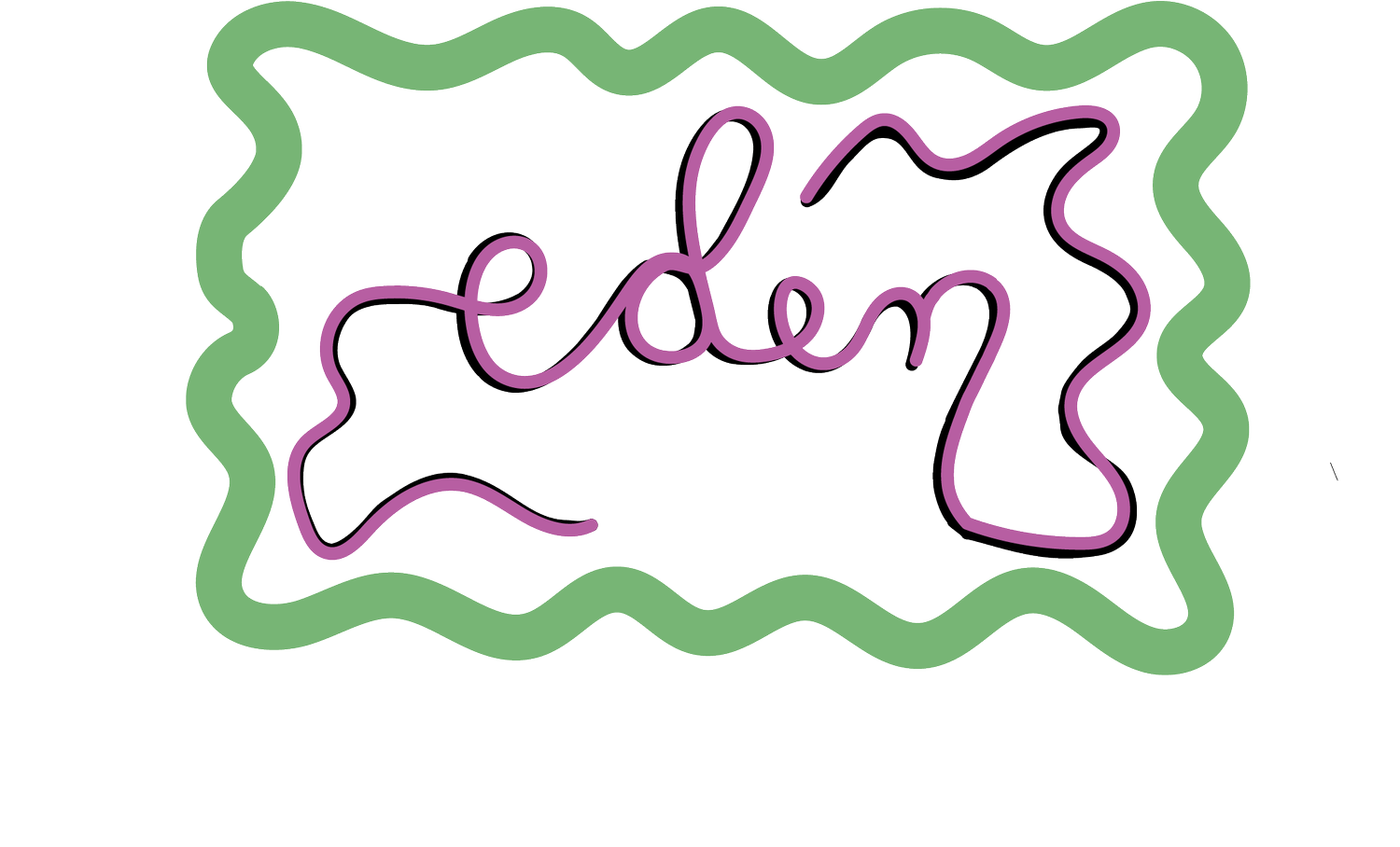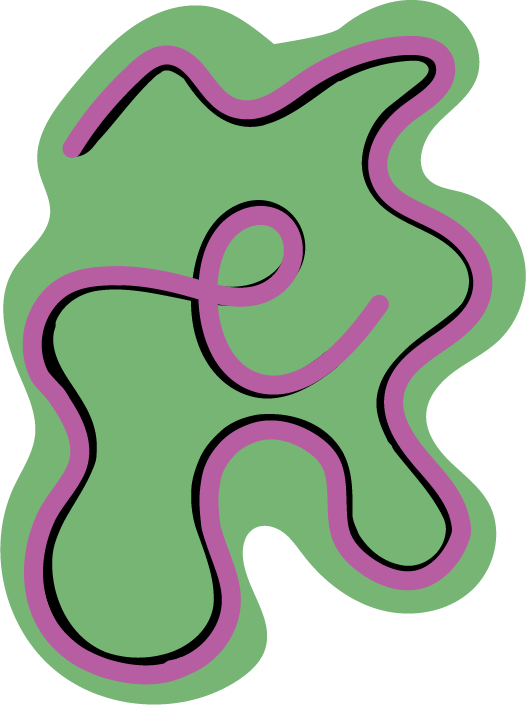Homemade Paint from the Garden
I have just been hooked on natural tones lately. The colors that come from our earth are so complex with deep layers, coordinate beautifully together and are easy to alter by changing the pH!
Today I have decided to try my hand at making basic fabric paints out of natural dye elements I’ve been growing and collecting for dye baths. This is a great way to use up a small amount of dye stuff, or the last little bit of color left in flowers from bundle dyeing.
The process for creating the paints is going to be the same for almost all plant materials, and it’s so quick and uses few supplies, so if it doesn’t work out, it’s easy to just try again.
Homegrown marigolds (dried). I only needed to use about a third of this jar to make one 1/4 cup of marigold paint.
MATERIALS
A small, heat resistant vessel. Mason jars work great for this because you can see the color as you’re mixing, and it’s easy to close up and store unused paints.
A small amount (1/4 -1/2 cup) of flowers or leaves. If you are saving and collecting plant materials over time, you can dry or freeze your flowers before using :)
About 1/2 cup of boiling water
Mortar and pestle
Cheescloth
A pinch of guar gum (available in the baking section at most grocery stores)
Optional, to modify paint colors:
Acidic Modifiers - lemon or other citrus juice, white vinegar
Alkaline Modifiers - baking soda, iron salt
To Make Paints:
PREP: If you plan to use these as fabric paints, I recommend first preparing your fabric with a scour and mordanting process.
MIX COLOR: Add a small amount of your flowers or plant material to a glass jar. Pour enough boiling water into the jar to cover the flowers. You want to use as little water as possible to extract a nice concentrated color.
Transfer the flowers & water to a mortar and pestle (or keep them in the jar and use the back of a spoon) to mash and muddle your mixture while the water is still hot.
Strain the flower bits from the liquid with a piece of cheesecloth & squeeze through all the last bits of color before discarding the solid bits.
THICKEN PAINT: While stirring vigorously, add a small pinch of guar gum to the liquid to thicken the paint. Try adding about 1/8th teaspoon, stir well, then let sit for 15 minutes to see how much it’s thickened.
You may want to practice on a scrap piece of fabric or paper to check the consistency — if the paint is bleeding, you can add little more guar gum and stir. If it is too gelatinous, you’ve probably added too much guar gum. This is one of those times where you can always add more but you can’t go back.
MODIFY: Natural colors can be super reactive to pH changes, broadening the color palette and creating new shades.
Try dividing up some of your paint and adjust the pH balance.
Acidic Modifiers (lemon juice, vinegar) may brighten or bring out surprising tones in your paint. Alkaline Modifiers (baking soda, iron salt) tend to darken your paint colors. A little bit of iron goes a long way here. You may notice with my marigold paint below, I started with a stunning yellow, pure marigold paint. I accidentally stirred it with the same brush I used for the marigold + iron paint, and I lost that bright yellow.
A good method for maintaining a wide variety of colors on the iron spectrum, is to dissolve 1/8 teaspoon of iron salt with a tiny amount of boiling water (1 or 2 tablespoons, or just enough to dissolve the powder). Then add small amounts of this iron solution to your paint.
I tried this process with four types of plant material and ranked the results below! For each plant I used, I made about 1/4 cup of paint and divided it in three parts for modifying.
Most Surprising Color Spectrum: Hibiscus
I started with a handful of hot pink flowers, so I was pretty shocked when I initially extracted a bright, bright green. Don’t get me wrong, this is the most beautiful green I’ve created, I just didn’t expect it to come from hibiscus flowers!
I added a small amount of iron salt to the next jar and produced a warm, army green.
The real magic happened when I added the lemon juice. Finally the pink I wanted! Watching the color in my jar change from green to pink made my jaw drop and squeal a little bit. It’s the cutest starburst pink color, and my favorite out of all the colors I created.
Most Reactive to Modifiers: Marigold
This is what I was mentioning earlier in this post, the marigold dye reacted FAST to the modifiers. I should have added even less iron salt, and been careful not to contaminate any of the colors with another jar’s paint brush.
I started with that bright yellow on the bottom, but it didn’t last long. After adding iron, I got nice olive green/ brown. I think adding more iron would take you to a nice warm brown (I’d love to try dyeing a top that color).
When I added lemon juice, it took me to a much lighter shade that I didn’t expect, but still quite like.
I’d love to retry marigolds while adding less of each modifier at a time, so I can have a wider spectrum. Ideally, marigolds are able to produce some orange tones too.
Least Variation in Color: Cannabis Leaves
I keep trying to make shit with these leaves my neighbor gives me, but I just think cannabis is a pretty difficult dye plant.
I extracted this pretty, soft yellow/green to start. I really like this color and have created it before, but you need a LARGE quantity to dye any clothing as opaque as this paint.
The iron salt made it a little darker and the lemon juice a little lighter. In the end, not much variation here. I still like the colors, but I would have loved to create a broader spectrum of colors.
The Brightest Hues: Cochineal
Cochineal is fun because it’s actually little bugs (scale) commonly found on cacti. I remember learning about it once at the Huntington Library after seeing yarn dyed in the most gorgeous deep purple. This is the only dye material I didn’t find locally; I ordered a small packet from Dharma Trading.
As soon as I added the boiling water to the cochineal in my jar, they began producing a gorgeous, opaque, blood red. I loved watching the color come out and mix into the water.
My initial paint mixture was a deep, berry purple. A small amount of iron made the mixture almost black. When you see this shade in the light, though, you can see the bits of purple and grey. The addition of lemon juice brightened the color to a stunning, hot pink.
I love how a few drops of lemon juice were squeezed onto my other samples, and you can see the bits of hot pink splattered on top. It looks especially awesome on the dark iron mixture.
How did the paints hold up over time?
I painted my samples on mordanted fabric and jarred up my unused paints. I stored everything for about 3 weeks and came back to …. decent results.
The color already applied to the fabric stayed pretty well! Granted, I didn’t wash these samples, so I’m not sure how the colors would hold up if I painted them on clothing.
As for the actual paints: they’re pretty nasty. After three weeks most of my paints grew mold on the surface and smelled pretty horrid. The lighter shades (most of the acidic mixtures) faded a lot in the jar. Cochineal plus lemon maintained it’s bright pink hue, but the other cochineal shades both look more grey than before. Surprisingly, the cannabis paints held their color pretty well! You can still clearly tell which colors have been modified and in which direction. Marigold and Hibiscus both maintained the hue of their iron mixture, but both other shades faded quite a bit.
After looking into these problems, I learned that adding a few drops of an essential oil with anti-fungal properties like wintergreen, clove, thyme or tea tree would both prevent mold and extend the life of my paints. So I guess I should have done that.
Overall, it was fun to play with color extraction on a slightly smaller and more experimental stage. Seeing the colors that I can make out of these plant materials gives me lots of ideas on colors I’d like to add to my wardrobe as well!










